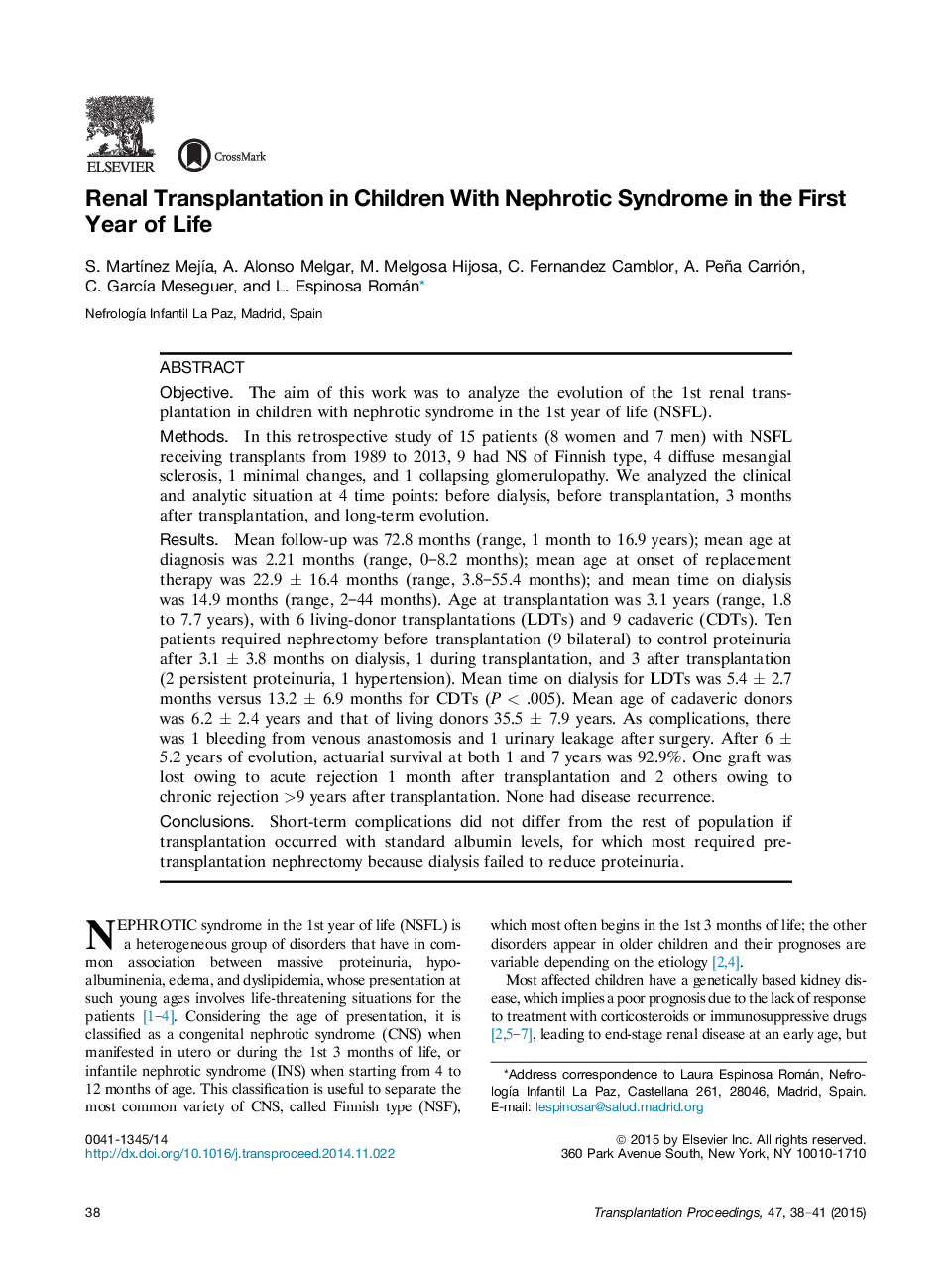| Article ID | Journal | Published Year | Pages | File Type |
|---|---|---|---|---|
| 4256356 | Transplantation Proceedings | 2015 | 4 Pages |
ObjectiveThe aim of this work was to analyze the evolution of the 1st renal transplantation in children with nephrotic syndrome in the 1st year of life (NSFL).MethodsIn this retrospective study of 15 patients (8 women and 7 men) with NSFL receiving transplants from 1989 to 2013, 9 had NS of Finnish type, 4 diffuse mesangial sclerosis, 1 minimal changes, and 1 collapsing glomerulopathy. We analyzed the clinical and analytic situation at 4 time points: before dialysis, before transplantation, 3 months after transplantation, and long-term evolution.ResultsMean follow-up was 72.8 months (range, 1 month to 16.9 years); mean age at diagnosis was 2.21 months (range, 0–8.2 months); mean age at onset of replacement therapy was 22.9 ± 16.4 months (range, 3.8–55.4 months); and mean time on dialysis was 14.9 months (range, 2–44 months). Age at transplantation was 3.1 years (range, 1.8 to 7.7 years), with 6 living-donor transplantations (LDTs) and 9 cadaveric (CDTs). Ten patients required nephrectomy before transplantation (9 bilateral) to control proteinuria after 3.1 ± 3.8 months on dialysis, 1 during transplantation, and 3 after transplantation (2 persistent proteinuria, 1 hypertension). Mean time on dialysis for LDTs was 5.4 ± 2.7 months versus 13.2 ± 6.9 months for CDTs (P < .005). Mean age of cadaveric donors was 6.2 ± 2.4 years and that of living donors 35.5 ± 7.9 years. As complications, there was 1 bleeding from venous anastomosis and 1 urinary leakage after surgery. After 6 ± 5.2 years of evolution, actuarial survival at both 1 and 7 years was 92.9%. One graft was lost owing to acute rejection 1 month after transplantation and 2 others owing to chronic rejection >9 years after transplantation. None had disease recurrence.ConclusionsShort-term complications did not differ from the rest of population if transplantation occurred with standard albumin levels, for which most required pre-transplantation nephrectomy because dialysis failed to reduce proteinuria.
